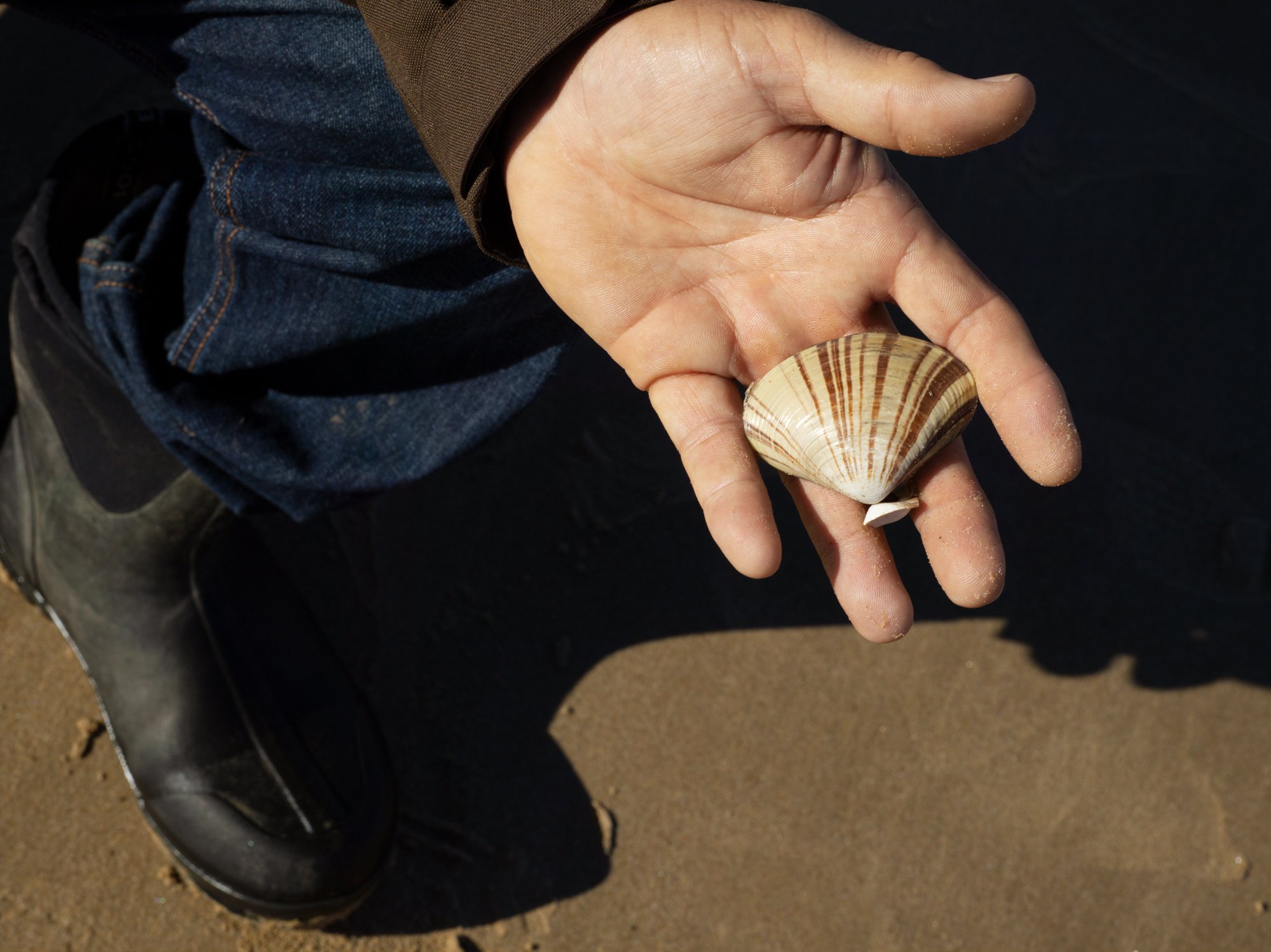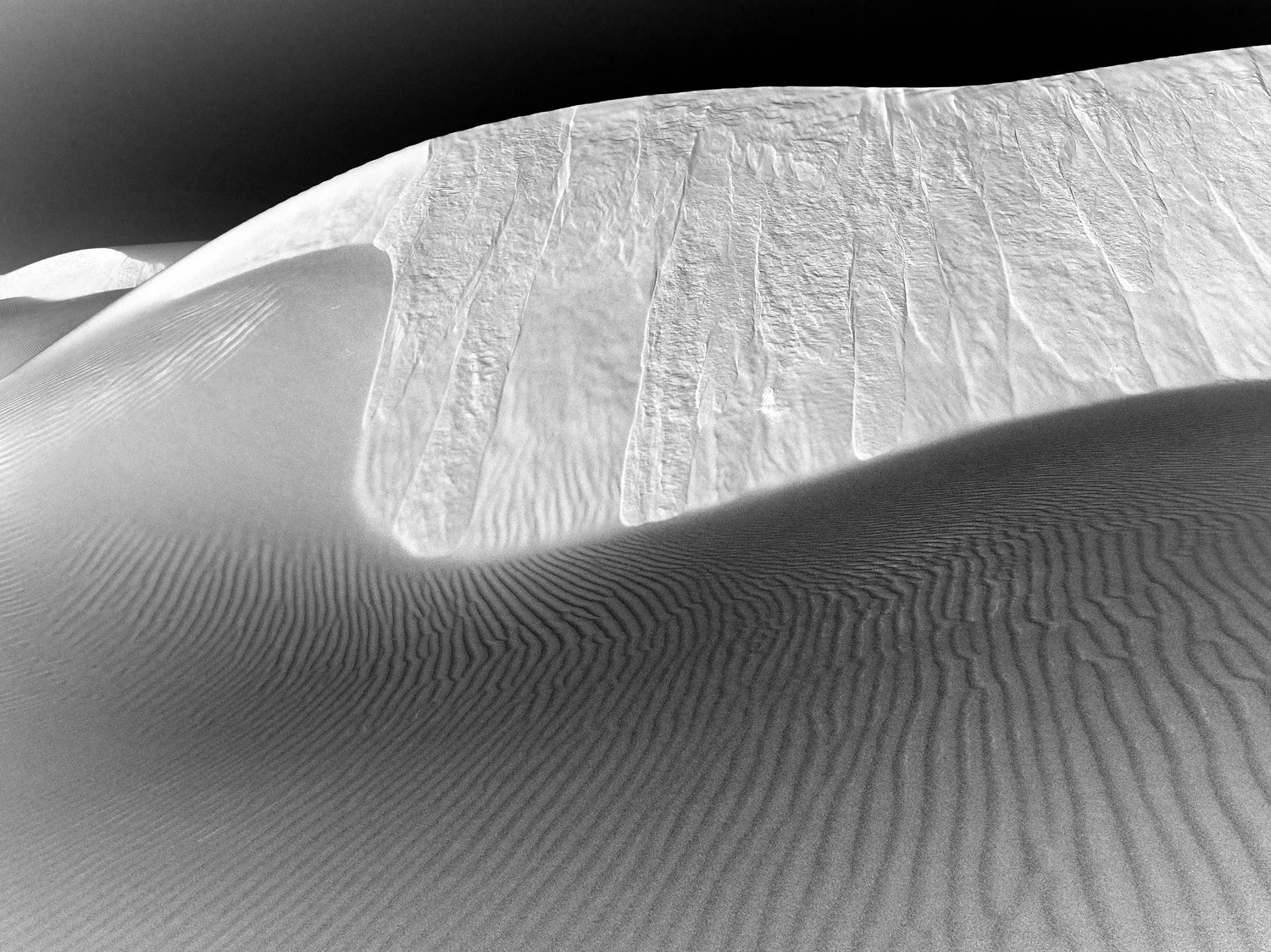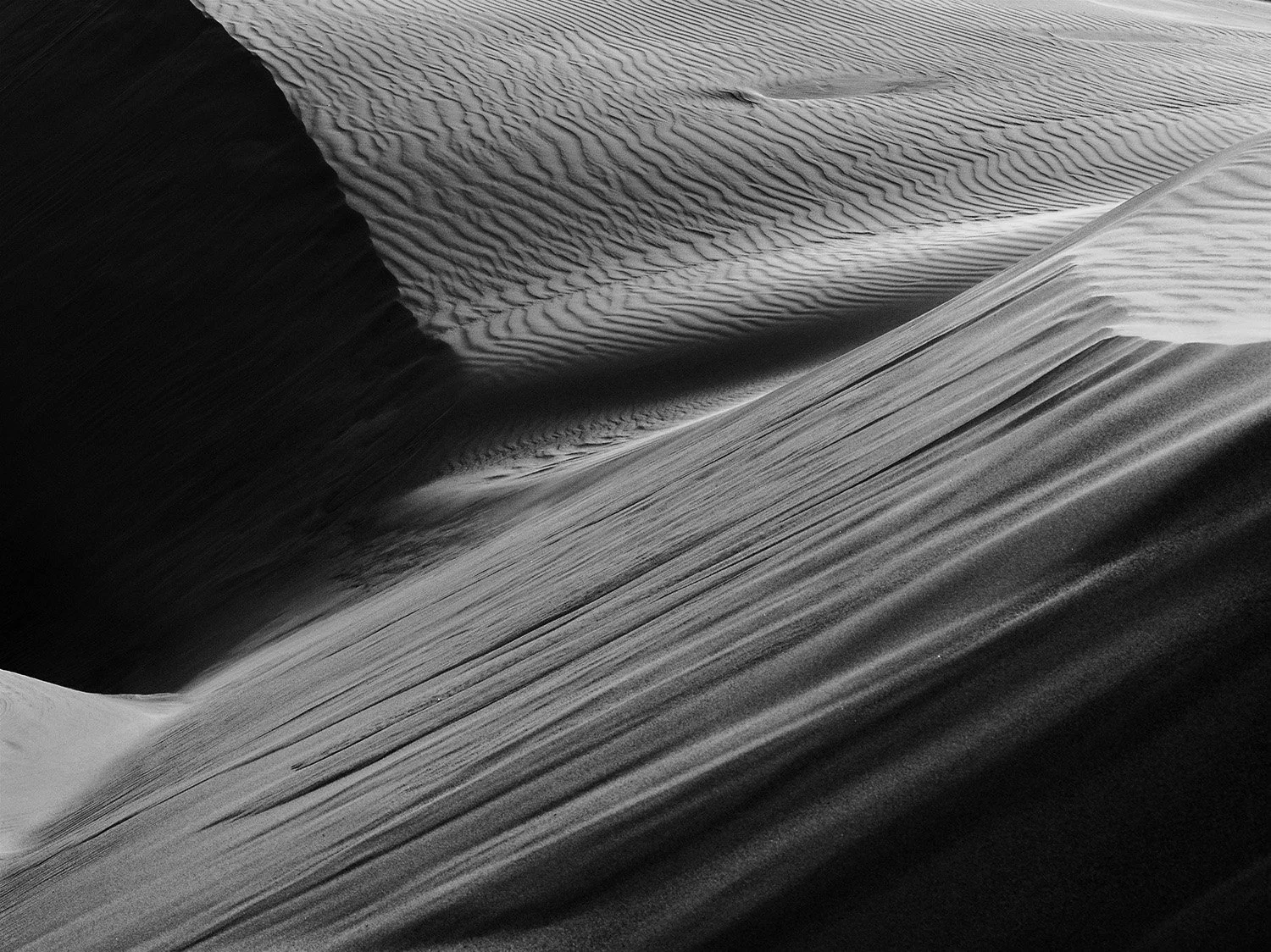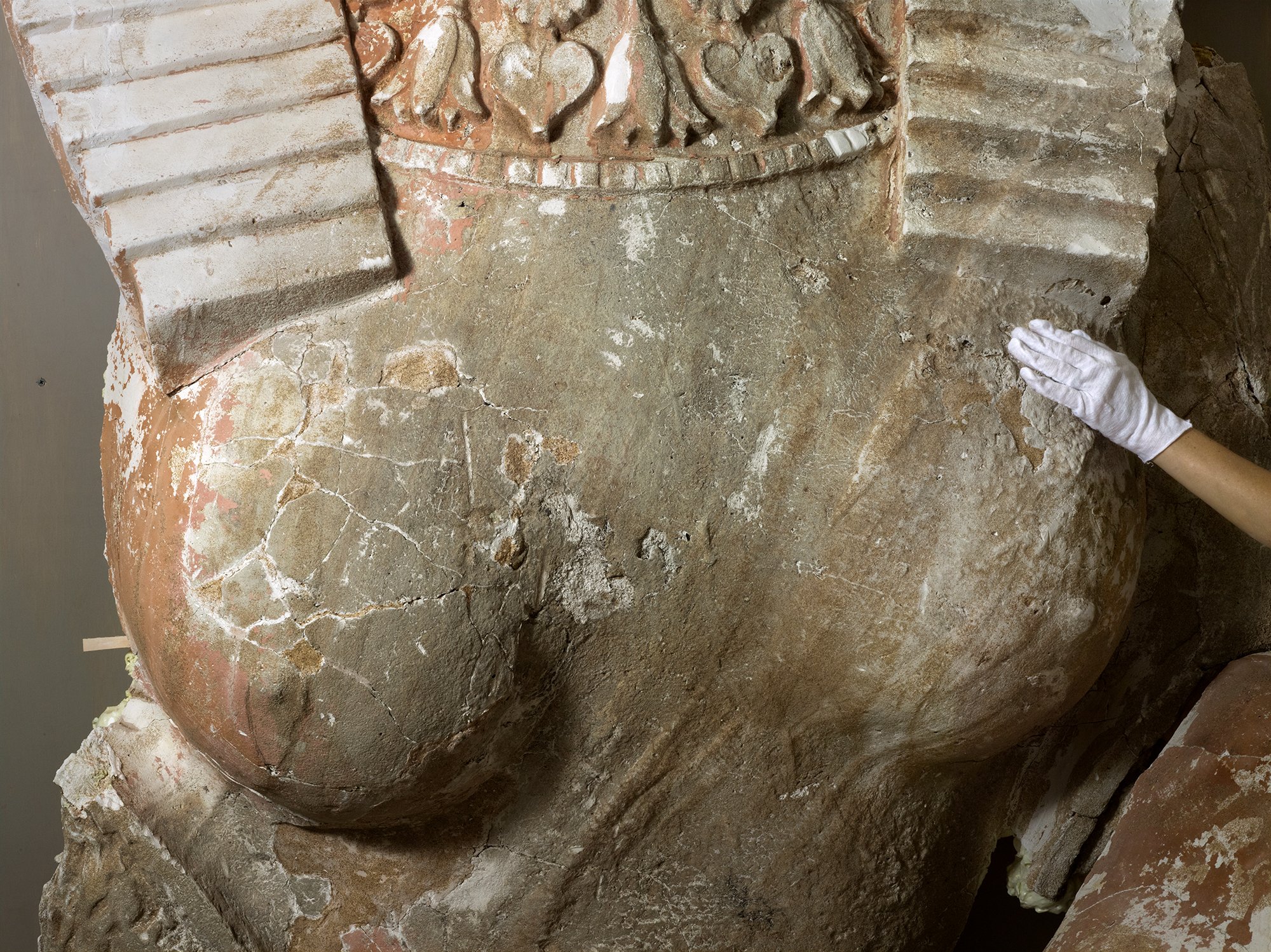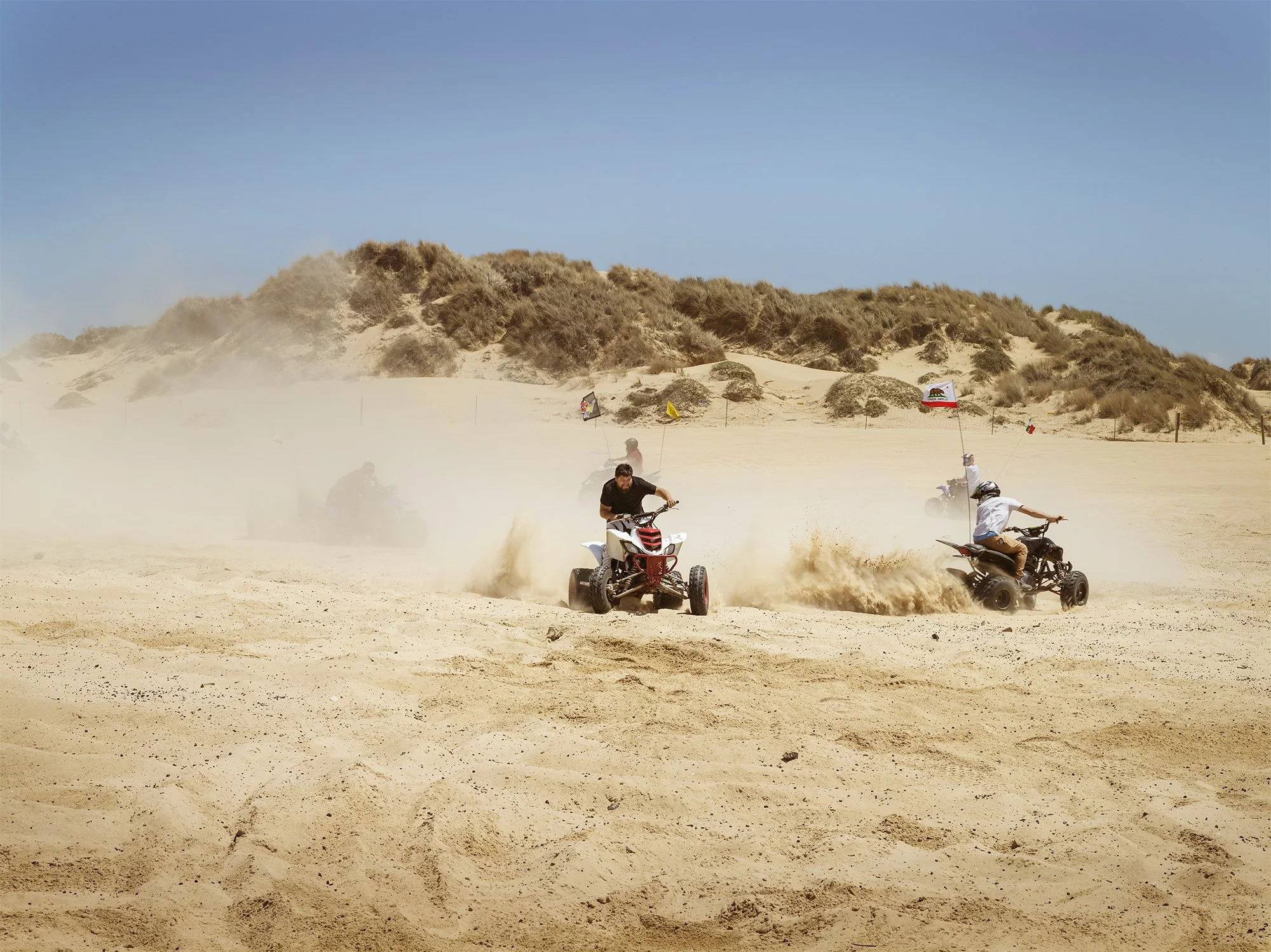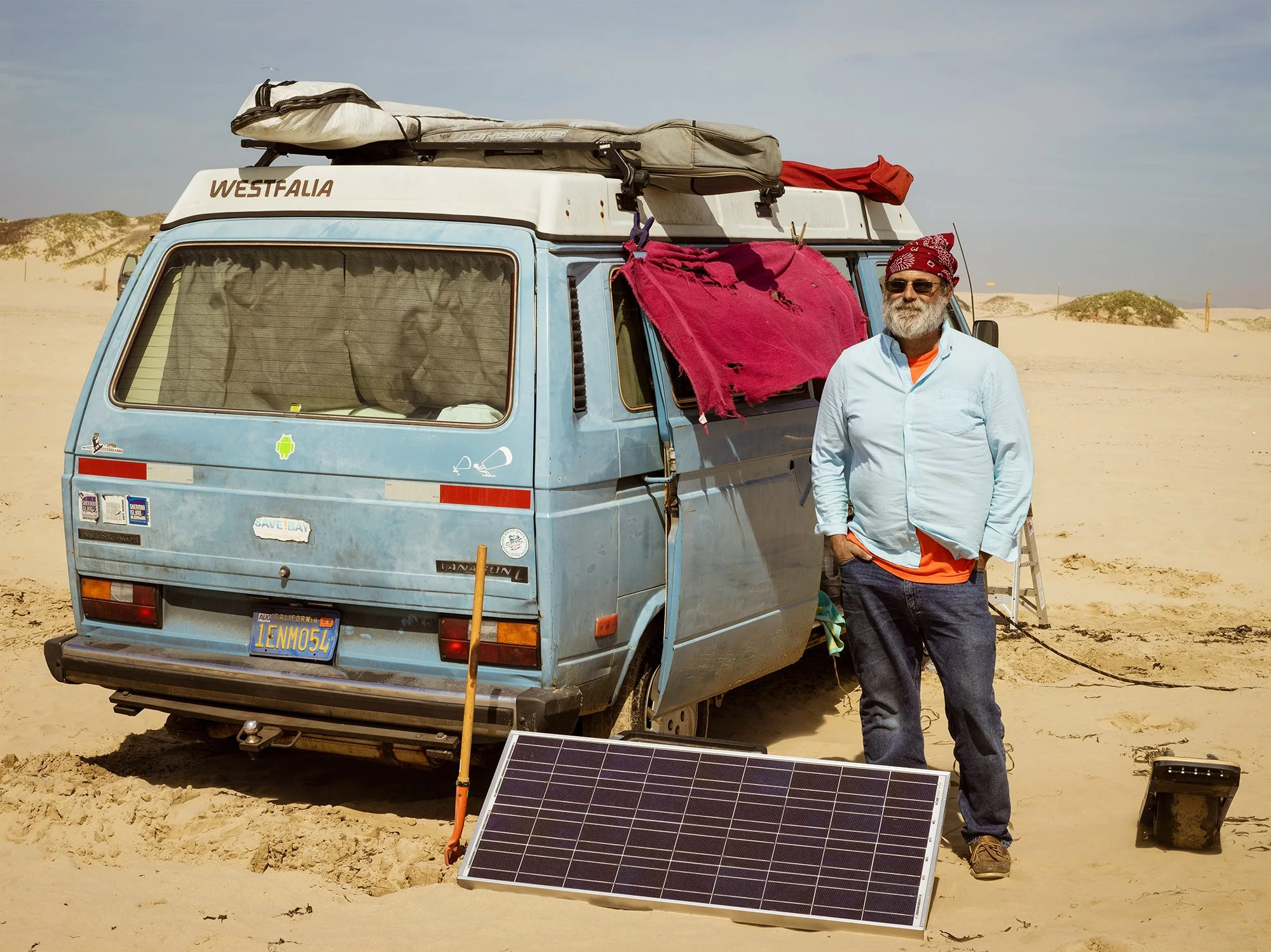Exploring the Layers of Oceano Dunes by Lana Z Caplan
Welcome to this edition of [book spotlight]. Today, we uncover the layers of 'Oceano (for seven generations),' by Lana Z Caplan (published by Kehrer Verlag). We'd love to read your comments below about these insights and ideas behind the artist's work.
The Oceano Dunes have long been a site of cultural, historical, and environmental significance. From the iconic photographs of Edward Weston to the remnants of Cecil B. DeMille’s 1923 film set for The Ten Commandments, these dunes have been a canvas for various narratives over the decades. Photographer Lana Z Caplan’s new book, Oceano (for seven generations), dives deep into the layered histories and current controversies surrounding this unique landscape. In this interview, Caplan discusses her journey through archives, hearings, and collaborations with the yak titʸu titʸu yak tiłhini Northern Chumash tribe, ultimately questioning the legacies of colonization, photographic history, and environmental threats facing the Oceano Dunes today.
Caplan’s work in Oceano reflects her commitment to capturing the multifaceted stories of the dunes. She explores how the land has been used, abused, and fought over, blending historical photographs with contemporary issues. The book’s subtitle, for seven generations, underscores the long-term vision needed to preserve and respect this landscape, as emphasized by Lorie Lathrop-Laguna of the ytt Northern Chumash Tribe. Through her lens, Caplan invites us to reconsider the past, present, and future of the Oceano Dunes.
Integrating Historical Layers: In your exploration of the Oceano Dunes, you've unearthed and interwoven multiple historical narratives, from indigenous histories to Hollywood's ephemeral escapades. How did you approach the vast and complex task of representing these layered histories through photography
This was one of the biggest challenges and one of the reasons why the project took me so many years to complete. The more I researched, the more I wanted to include. Unfortunately, many interesting stories had to be left out. I distilled the project into five main threads – the Indigenous Chumash, the excavated sphinx from Cecil B. DeMille’s 1923 Ten Commandments buried film set, the Dunites (a community of artists and mystics squatting in dune shacks in the 1920’s-40s), the legacy of Modernism and Edward Weston’s dune photos, and the current controversy over off-road vehicles riding in the dunes. To tie everything together, I always knew it would need to be in book form. The images needed to interact with each other, and texts were needed to describe components that could not be photographed. What is between the photographs becomes as significant as what is depicted in them to weave the story together.
What art and photography can reveal about history and past inhabitants is a recurring theme in several of my projects. The complexity of preserving histories and the role of photography in shaping how these narratives are told is a constant throughout the book. For example, with the Dunites, it was important to include their artworks and ephemera, but also to include Norm Hammond, the historian and steward of their works and folklore. For the sphinx, unearthed from a trench in the sand where the movie set was buried after filming 100 years ago, I include the art restorer repairing the plaster face, the news clippings about the excavation of the sphinx on the bathroom wall of the Dune Center Museum where the sphinx parts live, and the case of other items recovered from the sand (which curiously include prop Roman coins – not Egyptian). Artifacts of the yak titʸu titʸu yak tiłhini (ytt) Northern Chumash Tribe are photographed as museum objects in the local Mission church museum, referencing the near extinction of the Tribe by the Spanish Missionaries. These catalog style images are juxtaposed with portraits of the very contemporary family of the current Tribal Chair in the dunes, fishing and clamming as their ancestors have for thousands of years.
History is often written from one perspective, with an agenda. Memory is unreliable. My photographs tell constructed and conflicting stories. I wanted to use artifice and different stylized tropes of photography for each topic to call attention to the role media and photography have in the construction of history and ask the viewer to form their own opinion.
Environmental Consciousness and Art: Your work touches upon critical environmental issues, such as habitat destruction and pollution, juxtaposed with human recreation and historical exploitation. Can you discuss how you balance the aesthetic allure of the landscape with the urgent environmental narratives in your images?
This project is a conceptual work about photography but also cares deeply for the environmental ecosystem and cultural history of the dunes, and the health of my community members. The Dunes are a special place with a palpable energy that has been called a creative vortex by the Dunites, the place of the most holy vibrations on earth by famed astrologer Dane Rudhyar, and believed by some Lemurians to be the place where the lost continent of Lemuria would rise from the Pacific. There are native cultural sites there that date back at least one thousand years. However, the legacy of colonization is apparent in the treatment of these Chumash sites and land. Also, habitat for endangered plant species found only in the Oceano Dunes are getting driven over every day. Nearby residents lacking political or economic power are breathing in hazardous particulates in the air from the ATV wheels grinding the sand day after day - their young children getting asthma at alarming rates. These current issues are what drove me to feel this project has enduring relevance over the eight years I worked on it.
It is my hope that the images can be visually alluring, yet still conceptually complex. The people currently using this land for recreation are not easily categorized or one-dimensional. Pictured, there are kids and families including the ytt Northern Chumash, a bride and groom, hitchhikers, car campers, and more. My portraits do not aim to judge. I think the images can be beautiful while the subtext of what is happening on the dunes can be inferred, it is implicit. The black and white formal modernist images contrasted with the color images of tire tracks gouging the sand tell the polarities of the story visually. I hope the portraits and texts from public comments and essays fill in the middle.
Collaboration with the Community: You've mentioned collaborating with the yak titʸu titʸu yak tiłhini Northern Chumash tribal leadership and other community members. How has this collaboration influenced your photographic process and the storytelling aspect of your project?
Collaboration and researching from different points of view was key to shaping this project. I met with several people in the community to learn about their stories and to ask how they wanted to be represented as inhabitants of this land. I am a relative newcomer to this place. The yak titʸu titʸu yak tiłhini (ytt) Northern Chumash Tribe have been here over 10,000 years. This is their unceded land. They are very much a part of the story of Oceano and needed to be included. I worked with Mona Olivas Tucker, the current ytt Northern Chumash Tribal Chair, to decide what, where, and how to photograph. We decided to photograph with her and her extended family in the dunes. I asked the Tribe to contribute an essay to the book so their own words could be included. Dunite historian Norm Hammond and I met several times to figure out what we would photograph and include in the book. I sent him texts to edit, and he sent me poetry and images of things he thought I would appreciate. Ultimately, I did end up using some of his suggestions, like the letter from Elwood Decker on the end papers in the back of the book. And he was a part of each of the photos I made of Dunite items. Rachelle Toti from Concerned Citizens for Clean Air sent me a California Department of Fish and Game report from 1976 on the “The Natural Resources of The Nipomo Dunes and Wetlands”, which is where the map in the front of the book was sourced. This map allowed me to include representation of oil drilling in the Dunes and other details that are not in the photographs but are part of the story. I used the voices of community members - their own words - from their public comments spoken in front of the Air Pollution Control District board. As you might imagine, not everyone I worked with was in agreement. In the end, the book was a true collaboration, though there will likely be some that think it should be more one way or another, should include different people, images, or voices. My hope was to present what I found to be true for me, comment on the history and power of the medium regarding representation, authenticity and manipulation, and offer this collection of stories for reflection without telling people what to think.
Confronting Myths and Realities: Your project seems to confront the mythologized American West landscape, revealing a more nuanced, contested, and lived reality. How do you navigate the tension between myth and reality, and how has this tension informed your photographic choices?
This tension between myth and reality has been a guiding force in how to represent these histories and to ultimately create a reflection on the present moment. There are many myths at play: the myth of emptiness beginning with the vast panoramas of open space from Timothy O’Sullivan's early survey images to the stylized Modernists like Edward Weston; the myth of the Wild West, Spaghetti Westerns and “cowboys and Indians”; and the myth of utopian communities, many of which were established in California and are still extant.
With the black and white landscapes, I am obviously referencing the Modernists and Weston’s images in Oceano. But I use the medium of photography itself to turn the images into negatives, to confuse the notion of objective truth in photography. Just like Weston’s or O’Sullivan’s images, these areas look pristine and empty, yet all of our images are photographic constructions. Just outside of my frame are kids on boogie boards sledding down a dune and the sound of ATVs screaming through the air can be heard. In the days of Timothy O’Sullivan, there were Indigenous communities living in these “empty” spaces. Weston was staying in an artist community in a dune cove just outside of his frame.
The portrait and action shots of the ATV riders evoke cowboys or conquistadors on their horses, men conquering the landscape, taking the land. Some of the riders are also shot using lighting and tricks of advertising photography – referencing the selling of a lifestyle, consumerism, and emphasizing the business interests furthering the continuance of riding.
And all that is left of the past utopian community of the Dunites is their ideals – in their books, letters and artworks, preserved by their archivist. Their salvaged wood dune shacks have been subsumed by the sand highway – the path the ATVs take through the long dune complex from north to south. My images show tattered writings, household items strewn in the sand, wild imaginations of ships sailing but moored in the sand, accompanied by bittersweet stories of idealistic individual Dunites.
In essence, I tried to make images that confront and question these myths and familiar narratives in the very medium that has historically been used to promote and propagate them.
The Impact of Photographic History on Environmental Perceptions: Considering the role of iconic landscape photography in shaping perceptions of wilderness and environmental policy, how do you position your work in relation to this legacy? Do you see your photographs as a corrective or continuation of this tradition?
This is a great question and one I asked myself throughout making this work. I see this project as a conceptual art investigation, as much about its predecessors in photography and media as it is about Oceano and the histories and future of this place – commentary rather than corrective. I see these photographs somewhat outside of the tradition of iconic landscape photography, more post-modern in its approach. The book defines the place equally by the images in the landscape as by what is outside of the frame, the things we don’t see, like the people affected by the riding downwind of the dunes, the histories buried in the sand, the impact of colonization on the indigenous Chumash, and the current homeless encampments that are in the dunes south of the riding area’s RV campground. Beyond a reflection on photography, it really is more about people, and how we have used this place and treated each other, than the landscape.
The Feminist Lens and Landscape Photography: You've sought to provide a feminist response to the traditionally masculine vision of landscape photography. Can you elaborate on how a feminist perspective shapes your approach to capturing landscapes and human interactions within them?
Early on, I was deeply impacted by Ana Medieta’s Silueta Series, where she photographed and filmed the shape of her body as impressions in the earth, sand, ice, sometimes on fire or floating in water. For me, these works were about a spiritual connection with nature and the elements, with the maternal source of Mother Earth, and about reclaiming the image of the female body in the landscape. And in retrospect, Mendieta’s Silueta images, and her images that invoked violence against women, seemed to be a chilling foreshadowing of the violence of her death. I have never been able to shake the thought of a police outline silhouetting her form on the concrete as a final work in this series. Mendieta and others made me ponder what it is that is unique about how photography operates - how the temporal and ephemeral can be made eternal, or at least outlast the maker; how photography has been used – to claim territories, explore/exploit resources, exoticize indigenous people, bring faraway places and stories to suburban living rooms; and the power of the photographic image to manipulate emotion and empathy, for good and bad.
Though there are women photographed in the book, Oceano is not directly placing women in the landscape in the way someone like Laura Aguliar or Ana Mendieta did. However, I did use a conceptual multi-narrative approach to defining this place as a strategy to push against the monolithic male auteur conquering or taming the land in a single image. I flip the black and white images into negatives as a feminist gesture, to flip the traditional Modernist approach of Edward Weston. I made the portraits collaboratively and consciously, resisting the tradition of exploitative images of people in unfortunate situations.
To discover more about this intriguing body of work and how you can acquire your own copy, you can find and purchase the book here. (Amazon, Kehrer Verlag)
Lana Z Caplan
Lana Z Caplan is a distinguished photographer and filmmaker whose work often explores the intersections of utopia, environmental issues, and historical narratives. She holds a BA in Art History and a BS in Psychology from Boston University, as well as an MFA in Photography from Massachusetts College of Art. Caplan’s projects span various media, including single-channel films, interactive installations, video art, and photography. Her works have been showcased at prestigious venues such as the Museum of Contemporary Art Tucson, Institute of Contemporary Art San Diego, Everson Museum of Art, Inside Out Art Museum Beijing, and numerous international film festivals.
Currently an Associate Professor of Photography and Video at California Polytechnic State University in San Luis Obispo, Caplan has received critical acclaim in publications like ARTnews, LA Times, Hyperallergic.com, and The Boston Globe. Her recent project, Oceano (for seven generations), published by Kehrer Verlag in 2023, encapsulates her deep dive into the layered histories and contemporary issues of the Oceano Dunes. (Website, Instagram)
More photography books?
We'd love to read your comments below, sharing your thoughts and insights on the artist's work. Looking forward to welcoming you back for our next [book spotlight]. See you then!
